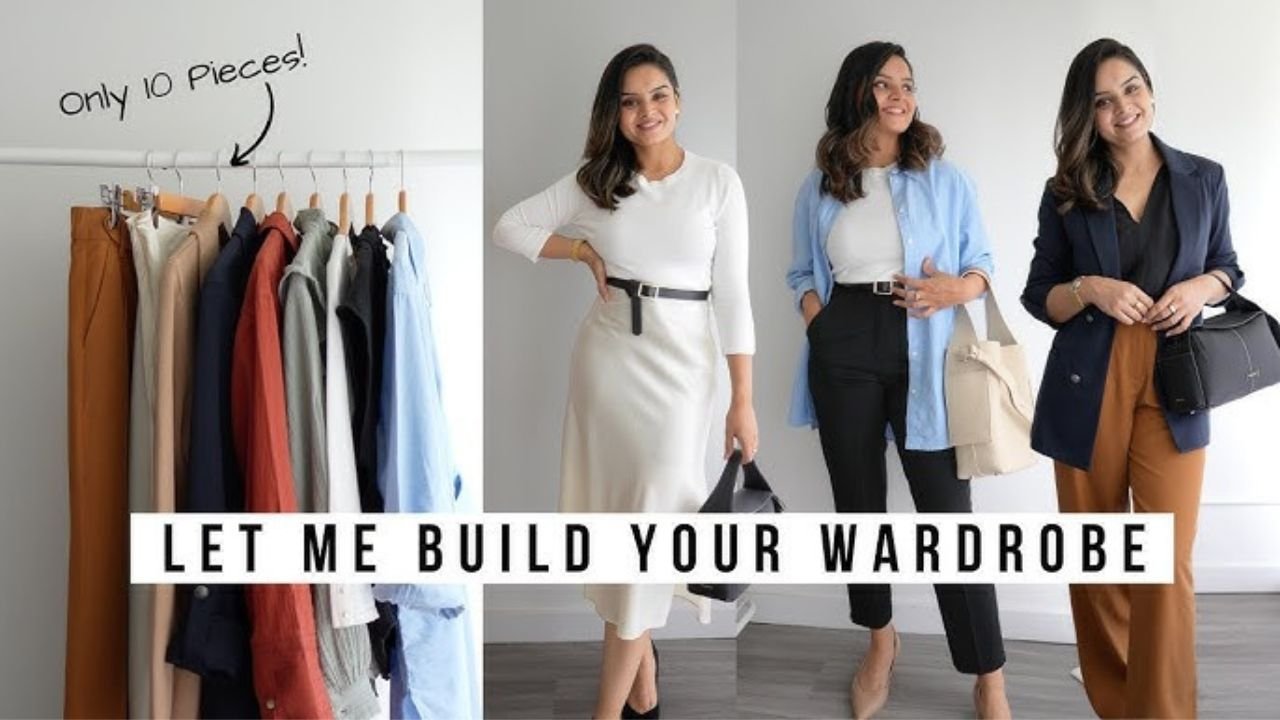In today’s professional world, dressing well is not just about adhering to dress codes; it’s a powerful tool for boosting confidence, making a positive impression, and expressing your personal style. A fashionable work wardrobe strikes the perfect balance between professionalism and individuality, allowing you to feel comfortable, confident, and stylish every day.
Whether you’re starting from scratch or looking to elevate your existing wardrobe, this comprehensive guide will walk you through the essential steps, key pieces, styling tips, seasonal considerations, and expert advice to help you build a versatile, sophisticated, and fashionable work wardrobe.
1. Understanding Your Work Environment and Dress Code
Before investing in clothing, it’s crucial to understand the dress code and culture of your workplace. Different environments demand different levels of formality and style.
a. Business Formal
- Typically found in finance, law, or executive settings.
- Key pieces: tailored suits, dress shirts, polished shoes, conservative accessories.
- Style tip: Opt for classic colors like navy, black, gray, and white.
b. Business Casual
- Common in tech, creative industries, or startups.
- Key pieces: dress pants or skirts, blouses, polo shirts, blazers, loafers.
- Style tip: Mix tailored pieces with trendy or casual items for a polished yet relaxed look.
c. Casual/Creative
- Found in creative agencies, fashion, or tech startups with relaxed policies.
- Key pieces: stylish jeans or chinos, trendy tops, statement accessories.
- Style tip: Express personality with bold colors, patterns, or unique accessories, but maintain neatness.
Tip: Always observe your colleagues’ attire and ask HR if unsure about dress code expectations.
2. Building the Foundation: Essential Wardrobe Pieces
A well-curated work wardrobe is built on versatile, high-quality staples that can be mixed and matched. Here are the core categories:
a. Tops
- Button-down shirts: Classic white, light blue, or patterned options.
- Blouses: Silk or chiffon blouses in neutral or jewel tones.
- Turtlenecks and sweaters: For layering and seasonal warmth.
- Casual tops: Polo shirts, neat tees (for casual environments).
b. Bottoms
- Tailored trousers: Black, navy, or gray.
- Pencil skirts: In neutral or subtle prints.
- Chinos or dress pants: For comfort and variety.
- Dark-wash jeans: For casual or creative workplaces.
c. Blazers and Jackets
- Tailored blazer: In classic colors for a sharp silhouette.
- Casual jackets: Cardigans, denim jackets, or lightweight trench coats.
d. Dresses
- Sheath dresses: Versatile and office-appropriate.
- Wrap or A-line dresses: For a flattering fit.
- Sleeved options: To adhere to modesty or dress code.
e. Shoes
- Pumps or loafers: In neutral shades.
- Ankle boots: For colder months.
- Casual sneakers: In workplaces with relaxed dress codes.
- Sandals: For warmer weather or casual days.
f. Accessories
- Belts: To define waistlines and add detail.
- Tote bags or structured handbags: Practical and stylish.
- Jewelry: Minimalist pieces like stud earrings, delicate necklaces.
- Scarves and ties: For added style and professionalism.
3. Choosing Quality Over Quantity
Investing in quality pieces pays off in the long run. Well-made clothing lasts longer, fits better, and looks more polished.
Tips for shopping smart:
- Fabric matters: Opt for natural fibers like wool, silk, cotton, or linen.
- Fit is key: Tailoring can transform an average piece into an impeccable item.
- Neutral colors first: Create a versatile base wardrobe with black, navy, gray, beige.
- Add pops of color: Incorporate bold hues or patterns through accessories or statement pieces.
4. Building Your Wardrobe Step-by-Step
a. Assess Your Current Wardrobe
- Declutter: Remove items that don’t fit, are damaged, or no longer align with your style.
- Identify gaps: What essentials are missing? Are there pieces suitable for your work environment?
b. Prioritize Versatility
Start with foundational pieces that can be styled in multiple ways.
c. Invest in Key Items First
Focus on high-quality essentials like a blazer, tailored trousers, and white shirts.
d. Expand Gradually
Add trendy pieces, seasonal items, and accessories to personalize your wardrobe.
5. Style Tips for a Fashionable Work Wardrobe
a. Fit and Proportion
- Tailoring is essential. Even the most expensive garment looks cheap if it doesn’t fit well.
- Balance proportions: Pair fitted tops with looser bottoms and vice versa.
b. Color Coordination
- Stick to a cohesive color palette.
- Use color to express personality but keep it professional.
c. Layering
- Layer with blazers, cardigans, or scarves for versatility and weather adaptation.
- Layering adds dimension and depth to outfits.
d. Mixing Textures and Patterns
- Combine different textures (e.g., silk with wool) for visual interest.
- Pair subtle patterns with solids to avoid overwhelming the look.
e. Accessorizing
- Keep jewelry minimal for a professional look.
- Use statement pieces sparingly for impact.
f. Personal Style
- Incorporate elements that reflect your personality: unique jewelry, bold shoes, or colorful blouses.
- Remember, subtlety often speaks louder in professional settings.
6. Seasonal Wardrobe Considerations
Adapting your wardrobe to the seasons ensures comfort and style year-round.
a. Spring
- Lightweight blouses, skirts, and dresses.
- Layer with cardigans or light jackets.
- Bright colors and floral patterns.
b. Summer
- Breathable fabrics like linen and cotton.
- Dresses, sleeveless tops, and open-toe shoes.
- Sun protection accessories like hats and sunglasses.
c. Fall
- Sweaters, trench coats, and ankle boots.
- Rich, warm colors: burgundy, mustard, forest green.
- Layering is key.
d. Winter
- Wool coats, thermal layers, and sturdy boots.
- Turtlenecks and long-sleeve sweaters.
- Scarves, gloves, and hats for warmth.
7. Maintaining and Updating Your Wardrobe
a. Proper Care
- Follow washing instructions.
- Rotate clothing to prevent wear.
- Repair minor damages promptly.
b. Regular Audits
- Reassess your wardrobe every season.
- Donate or sell items you no longer wear.
c. Trend Integration
- Incorporate trendy pieces sparingly to keep your wardrobe fresh.
- Focus on timeless styles and add trendy accessories or details.
8. Tips for Cost-Effective Shopping
- Set a budget: Prioritize quality over quantity.
- Shop off-season: Get discounts on seasonal items.
- Visit outlet stores and sales: Save money on high-quality pieces.
- Thrift and vintage shopping: Unique finds at lower prices.
- Invest in versatile pieces: Items that serve multiple occasions.
9. Final Thoughts: Confidence Is Key
Building a fashionable work wardrobe is about more than just clothes; it’s about feeling confident and authentic. When you invest in quality, fit, and style, you’ll project professionalism and personality simultaneously.
Remember, your wardrobe should evolve with your career and personal style. Stay open to experimentation, but always prioritize appropriateness and comfort.
10. Summary Checklist
- Understand your workplace dress code.
- Build a foundation with versatile, high-quality essentials.
- Incorporate personal style through accessories and details.
- Adapt outfits seasonally for comfort and appropriateness.
- Maintain and update your wardrobe regularly.
- Invest smartly and shop thoughtfully.
In conclusion, a fashionable work wardrobe is an investment in yourself. It reflects your professionalism, creativity, and confidence. By thoughtfully curating your clothing choices, paying attention to fit and fabric, and expressing your personal style within the bounds of your workplace environment, you can elevate your professional image and enjoy dressing every day.
If you’d like, I can also provide specific outfit ideas, shopping lists, or advice tailored to particular industries or personal styles!

